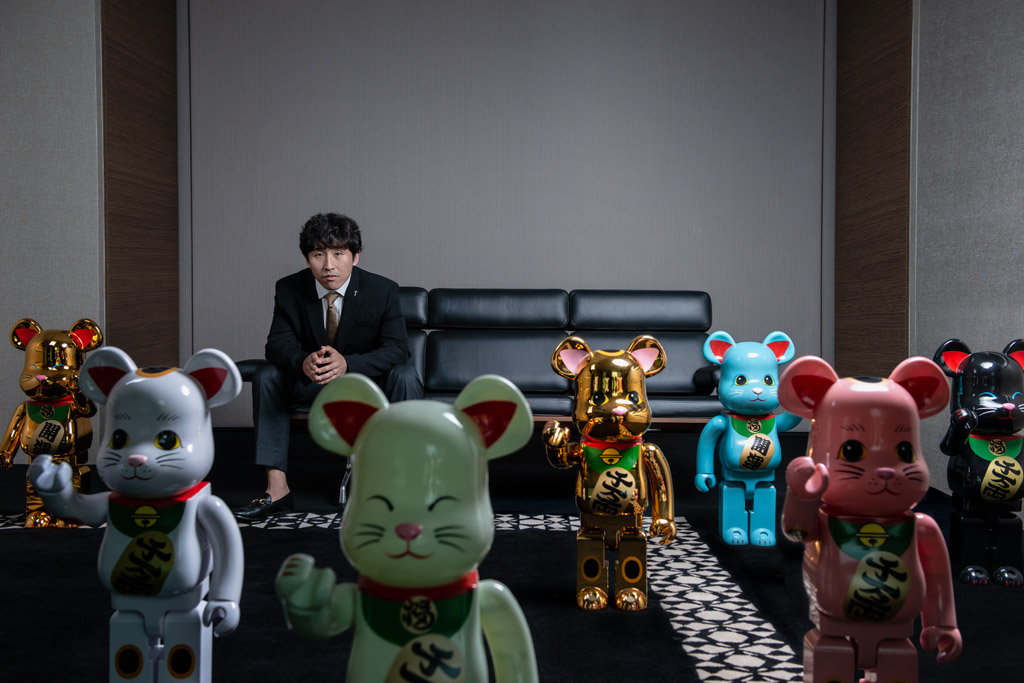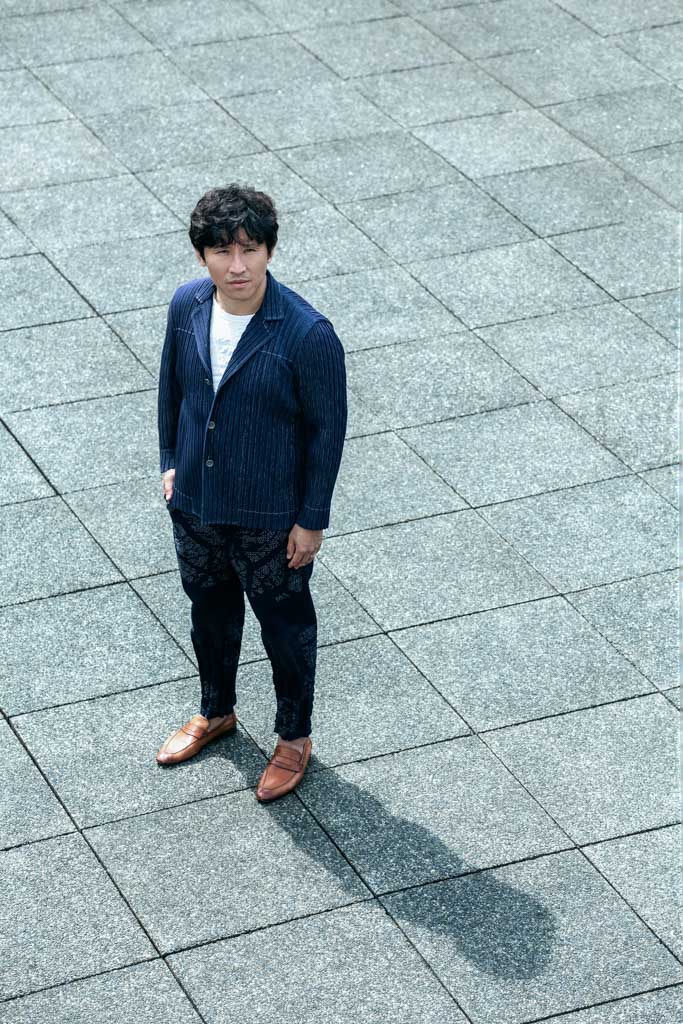What eventually grew into Goldbell Group began its operation in 1980, the year that Mr. Alex Chua was born. His grandfather, the late Mr. Chua Kim Cheng, and his father, Mr. William Chua, who is currently the Group chairman, set up a distribution company for trucks, gradually expanding into forklifts, other heavy equipment, and GPUs (ground power units).
When some of their customers who needed heavy equipment did not have the resources to acquire them, they set up a leasing business. Later on, with increasing number of customers requiring private vehicles for their foreign executives stationed in Singapore, they organized a fleet of private vehicles on long-term lease.
Today, the spread of Goldbell Group’s products and services is enormous, encompassing distribution and leasing of vehicles and equipment, as well as financial services. Despite its size, a sense of order prevails in the company, organizing and integrating every part of the organization. This organic growth serves the company well, whether in developing new products and services or harnessing efficiencies between the business units.
The Group’s client base has expanded alongside the provision of new services, and now spans nearly everything from construction and logistics companies to service and manufacturing firms. “We do everything that runs on the road,” Mr. Chua says, “from four wheels to sixteen wheels, across all industries.”
- DEFINE AND OWN THE ROLE
- LOOK AT THE CONSUMER
- GIVE THE LEG UP
- ADOPT THE MINDSET
- CREATE THE CULTURE
- PLAN FOR THE FUTURE
Define and Own the Role
Thirty-eight-year-old Goldbell Group is not a household name that the businesses it supports have become. Many people who know the name from Goldbell Tower, the Group’s Singapore headquarter, are not aware of its business activities, despite its 60 per cent share in Singapore’s commercial vehicle leasing market.
Mr. Chua emphasizes that the Group has deliberately kept to its B2B roots supporting businesses from behind the scene. “But if you have bought something from Lazada or Red Mart, chances are you have made contact with us,” he says. Leading e-commerce services provider RedMart launched its business with three Goldbell vans. Today, half of SingPost’s vans and trucks, and 80 per cent of the Ninja Vans plying their trade across Singapore belong to the Group. It also owns 1,300 private cars that other companies use to ferry executives from airport to hotels, or from homes to offices.
“That’s how we grew the business. First, we supplied them with vehicles; those who didn’t want to buy, leased them from us. If their CEO were stationed in town and they needed a personal vehicle to transport them, and we offered long-term lease on private vehicles. We only do what we know,” Mr. Chua says. And, evidently, they now know a whole lot.
Financial services, the latest business to emerge from the Group, also developed organically. It began with customers asking for access to working capital, Mr. Chua explains. A senior director of the Group spearheaded the development of financial products before rolling them out under Goldbell Financial Services, a fully owned subsidiary of Goldbell Group. Mr. Chua, who was previously COO of the Group, was chosen to lead the new business as CEO.
That was three years ago. Since then GBFS has lent close to S$350million. “If you look at non-bank financial institutions (FIs), we are among the bigger ones, and if you go by age, we are one of the biggest,” Mr. Chua adds. GBFS has a team of about 40 people, and runs businesses in Singapore and Malaysia.

- DEFINE AND OWN THE ROLE
- LOOK AT THE CONSUMER
- GIVE THE LEG UP
- ADOPT THE MINDSET
- CREATE THE CULTURE
- PLAN FOR THE FUTURE
Look at the Consumer
GBFS offers invoice financing, an asset-based lending product that allows companies to finance slow-paying accounts receivables. Through factoring customers can sell their accounts receivables to GBFS in order to obtain immediate funds that can improve their working capital. The customer can sell its invoice in exchange for an immediate payment, or use their receivables to secure a revolving credit line.
“Our customers are mostly SMEs, and although we cover everything from start-ups to listed companies, some of them are unable to obtain loans from the capital market for a number of reasons,” Mr. Chua shares. Their size, business structure and nature of business – the type of products or services – may not fit the profile of a company that FIs are looking for.
With factoring, customers technically raise funds from selling their asset rather than borrowing money. As long as the customer has invoices from creditworthy commercial clients, it is qualified for factoring. “This is where we have a distinct advantage,” Mr. Chua points out, “because we develop our (financial) products based on what the customer needs.” One customer, a scaffolding rental company, have had difficulty obtaining a loan from banks, but when GBFS saw that it had contract with the Land Transportation Authority, it readily granted the loan. Factoring is a big help for small businesses that have neither substantial assets nor long credit history.
“When you’re doing a hire purchase on a car, you’re looking at the consumer, not the asset,” Mr. Chua expounds. “If you lend to an SME, there’s a single party which is the owner – you look at his behaviour, not just his company’s performance.”
Mr. Chua insists that their financial products do not have eye-popping innovation. “They have been there all the time; what makes it different is our connection to our customers, and our own system. If the (customer’s) profile does not fit conventional requirements for funding, we get to know the business owner, ask how he sees his operation, why it makes sense to him.” He claims they are not constrained by cookie-cutter questions about years in business, assets, and P&L. “We look at the business and its owner first; its performance history and accumulated assets come last – not the other way around. Are we comfortable lending to this person? If the answer is ‘yes’, we go ahead.”
- DEFINE AND OWN THE ROLE
- LOOK AT THE CONSUMER
- GIVE THE LEG UP
- ADOPT THE MINDSET
- CREATE THE CULTURE
- PLAN FOR THE FUTURE
Give the Leg Up
Mr. Chua asserts that there is a lot of small businesses whose only hurdle towards “making it big” is access to capital. They have amazing ideas, unique value propositions, and bright prospects that the capital market often misses out on. “We don’t necessarily go out looking for new things to offer them. They come to us with their unique problem, and we work with them to find a solution.” Often, these problems fall between the cracks of conventional credit inquiry, a situation that has seen GBFS in business with a whole array of ‘unusual suspects’ – customers whose creditworthiness is diminished by their profile. “Now we’re doing vending machines and even washing machines – please don’t ask me why,” he says. If the customer can make a good case for a business, GBFS will try to make it happen.
Another major product from GBFS is hire purchase agreement, which provides customers – in this case, lessees – with an option to buy a heavy equipment or a vehicle. An organically developed product, hire purchase grew out of actual needs from GBFS customers to own an equipment or vehicle that they are leasing but could not afford. Through hire purchase, GBFS spreads the cost of, say, a heavy equipment, and gives the customer a chance to purchase it. Ownership of the leased product is turned over to the customer only at the end of the agreement, giving GBFS adequate protection.
GBFS has also gone into inventory financing, which provides short term loans or revolving line of credit to customers who need to purchase products to sell. This helps small businesses that need to pay their suppliers faster than they can sell their inventory. It also helps them manage seasonal peaks by having capital to purchase larger inventories and take advantage of a high demand. In this instance, the said products serve as collateral for the loan. Inventory financing is considered risky: If the borrower is unable to move his inventory, his lender will be saddled with it.
“There are red flags, tell-tale signs, that we take into consideration to mitigate our risk. For example, if a joss stick vendor needs inventory financing, we can look at his books and study his performance during the New Year, Hungry Ghosts Month or Qing Ming when seasonal demand for such product peaks. If records do not tally, we can call off the deal.”
Currently, GBFS business is evenly divided between equipment financing and working capital. “We started with 80-20, with vehicle financing making up the larger volume of business, naturally because we started out in that sector. Through the years we moved it to 50-50: It’s now 50 per cent vehicle and 50 per cent working capital-related –factoring, inventory financing, mortgages, and so on,” Mr. Chua shares. “Last year we ran a default of 0.15 per cent, and that is all just from the car financing.”
- DEFINE AND OWN THE ROLE
- LOOK AT THE CONSUMER
- GIVE THE LEG UP
- ADOPT THE MINDSET
- CREATE THE CULTURE
- PLAN FOR THE FUTURE
Adopt the Mindset
Adopting the SME mindset makes a big difference for GBFS, Mr. Chua claims. “I think it’s because we started out as an SME. We came from a business background – distribution, leasing – not lending.” He illustrates his point with how a customer in Malaysia had been turned down by a bank for a loan. “They have been borrowing from banks for the last 20 years to buy big injection molding equipment. It’s a highly profitable company with good a record. They were growing so fast and at one point needed RM5million to renovate their office and make space for their additional staff. When they approached a bank for a loan, the bank decided that since 90 per cent of their transactions have been hire purchases, their case was turned over to the hire purchase department.”
The bank took six months to come back with an answer. “We went in, looked at the business, and found it to be good. They have unencumbered equipment; we went ahead to refinance the entire flow of the equipment, and give them the RM5million. This took us a month to decide.” Understanding the nature of businesses allows GBFS to work with speed and efficiency, and look past the program. “We look at what the customer needs, and figure out how much we need to manage that kind of risk. You can quantify some parts of credit, but the big part of it is art.”
Going by turnover, GBFS is no longer classified as an SME. “We’re a big local corporation now, although we started out as an SME and grew as an SME. The difference between a large corporation and an SME lies in the mentality of their workers. It’s about having a sense of ownership.
“I spent eight years in JP Morgan. During my first four years there, my department had only 12 people, all equity traders; it was a start-up. We did everything. My MD, one of the youngest MDs in Asia, sat next to me. We had lunch together, played basketball together. Everyone did everything, and everyone worked as if it’s their own business they were running,” Mr. Chua remembers.
And when the company grows too big and too fast, its people loses that culture, Mr. Chua surmises. “When the system gets corporatized it loses that essence. To achieve efficiencies, you compartmentalize the structure. I guess you can do that in the back end, but not with everything. The front-end needs human element, and I believe that’s where the SME culture can come in. I know a lot of companies that have grown but remain running like an SME, and their success lies in people taking ownership of the business. When a problem comes, no one walks away and says, ‘That’s not my department’s problem’. In an SME when a problem comes, everyone gets involved.”

The difference between a large corporation and an SME lies in the mentality of their workers. It’s about having a sense of ownership.
- DEFINE AND OWN THE ROLE
- LOOK AT THE CONSUMER
- GIVE THE LEG UP
- ADOPT THE MINDSET
- CREATE THE CULTURE
- PLAN FOR THE FUTURE
Create the Culture
The biggest challenge in starting a company is finding the right people who are receptive to a particular workplace culture, Mr. Chua says. “Goldbell has 38 years to build the team for this kind of culture. (The average length of service in the company is 12 to 15 years.) They understand and embody the culture.”
With his team in place and the business thriving, Mr. Chua can draw up a growth plan for the company: “In Singapore, I’d like to expand the book size to close to S$.5billion. Companies usually take a long time to get there, perhaps up to 20 years, but we believe we can do that in 10 years or less – of course with the banks’ support. We also want to grow geographically. We’re now in Singapore and (since November 2017) Malaysia. We’re three years old, and our growth has been steady,” he says.
Under Mr. Chua’s guidance, GBFS is investing substantial resources in process development, which recalls his initial accomplishment at Group level when he set in motion an intelligence system that would analyze business data for a better understanding of the company’s processes and mapping out a way forward.
He recalls how the entire Goldbell business ran on a single system built by one person in the early days. “When I joined the company, I had no data, so I had no CRM, no models, and so on. I spent my first three years building up a new system.” Being a start-up, GBFS is in an ideal situation for process development and inception.
- DEFINE AND OWN THE ROLE
- LOOK AT THE CONSUMER
- GIVE THE LEG UP
- ADOPT THE MINDSET
- CREATE THE CULTURE
- PLAN FOR THE FUTURE
Plan for the Future
Technology investment is a new focus for the company. GBFS has recently contributed to a series A round of a start-up that is developing an instalment system for e-commerce. Founded by two young NTU graduates, “the start-up has just completed its seed round, but they’re already signing up major e-commerce companies,” Mr. Chua reveals with pride. The resulting technology will be shared between the start-up and GBFS. “I will use it and enhance it for our needs, but if they want to use it in other places they should be able to do it. I don’t believe things can be contained nowadays.
“What I want is their consumer credit algorithm. They’re developing something for B2C, but it has relevance to me. I’m interested in taking what they have and applying it to a B2B model. They have just completed the term sheet; now we’re ready to start the R&D. We have prepared a small room for them to use so they can work with my team.” Mr. Chua compares the start-up to a “translator” that would bridge the existing system and the one that under development.
“I don’t think business processes and systems should either old or new. I think it’s a hybrid. Businesses thrive best when they work new partners and come up with something new together. A lot of what you see us developing are not new, but they use new ways of looking at things. It’s using our old domain knowledge to do things better,” he explains. Mr. Chua will likely sit on the board and help in funding the start-up.
Although he plans to keep to a supporting role, Mr. Chua hopes that the mention of Goldbell would bring to mind “a place that is good for its employees, good for the clients, and good to its investors”.














 Back
Back
